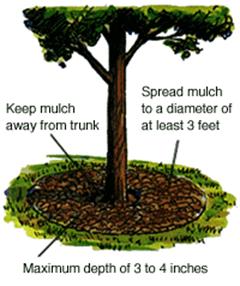*************************************************************
HARVEST TIME FOR WEIRDO’S
BY
Just a word
about some of the new things I tried this year.
Out at the front fence are “Hairy Balls” (Gomphocarpus), six
feet tall. The seed packet
says 4 feet. I started them in
the basement not knowing how long a season they would need. First, they
had clusters of little (less than an inch) of bell like, white blooms
coming out on the top third of the stem.
Now I have hairy balls, some as large as 3 inches across of a light
green. They look hollow but I assume they will hold some seeds. I am
hoping they will dry for winter bouquets.
The packet recommends that you remove the tops of the plants early
to make them branch more.
In a pot by the
front door are the rosary plants, also called “Job’s Tears” (Coix
lacryma). It is a grass about 3 to 4 feet tall. The grass is a native of
The beads hang
on 1˝ inch long stems and turn a shiny purple when they mature. Some are
dark, some are light, and some are striped.
Each bead has its own stem making for an easy place to thread a
needle. Kids love to grow the plants, harvest the seeds, and make their
own necklaces.
“
I have never
really tried to have an herb garden but do have different ones scattered
around. This spring I noticed
a small, golden leaved plant that I thought would add color to one of my
large pts. Its tag said
“Pineapple Sage”. As of
today I cannot find any of the other plants in the pot as my now big
golden one covers side to side. It has grown in spite of my squeezing a
leaf when I go by and then sniffing my finger.
In the
greenhouse is a 6 foot tall mass of stems with only an occasional small
leaf that only is ˝ to 1 inch long. As with many “Euphorbia’s” it
has milky sap (a Poinsettia is a Euphorbia) that some people are allergic
to. This one is called a
“Pencil Plant” or “Milk Bush” and grows this maze of stems about
the size of a pencil (Euphorbia tiracolli). It is too big to bring in for
winter so I took one of the pencils, stuck it in potting soil, and it
immediately took root. They
are tropicals that grow to 13 feet as a native.
In a big pot in
the greenhouse is a colony of “Climbing Onions” (Bowiea valubilis)
that is not an onion but does have a round, watery base sitting just on
top of the toil. Several years ago someone brought me her mother’s
plants after she had died. It
has now divided into many “bulbs” with long stringy stems and only a
small leaf now and then. It is
not especially pretty and only sometimes does it have a very small white
bloom, but it climbs and climbs.
I put it in the
big pot that contained a trellis leaning on a window.
Long ago the skinny stems reached the top, crawled along the
window, and went around the corner into another plant.
One of my house plant books says, “It is both rare and
repulsive”. The stems branch often in their climb.
Luckily it has a rest period when everything turns brown, let’s
go, and drops so I can clean it up before it takes over.
It is a native
of
Another new
plant I have is Japanese Laurel (Acuba japonica). It is also called
“Gold Dust” plant. It is a
shade lover, and I think the cultivar I have is Cratonifolia, as first
glance it does look like a Croton. It
will need to come into the garage soon and should have purple blooms next
spring.
Copyright 2009
*************************************************************
A
(Reprinted
by permission from the Arbor Day Foundation)
Mulch is a tree's best friend as it
insulates soil, retains moisture, keeps out weeds, prevents soil
compaction, reduces lawnmower damage, and adds an aesthetic touch to a
yard or street. Remove any grass within the mulch area, and the area from
3 to 10 feet in diameter, depending on tree size. Pour wood chips or bark
pieces 2 to 4 inches deep within the circle, but not touching the trunk.
